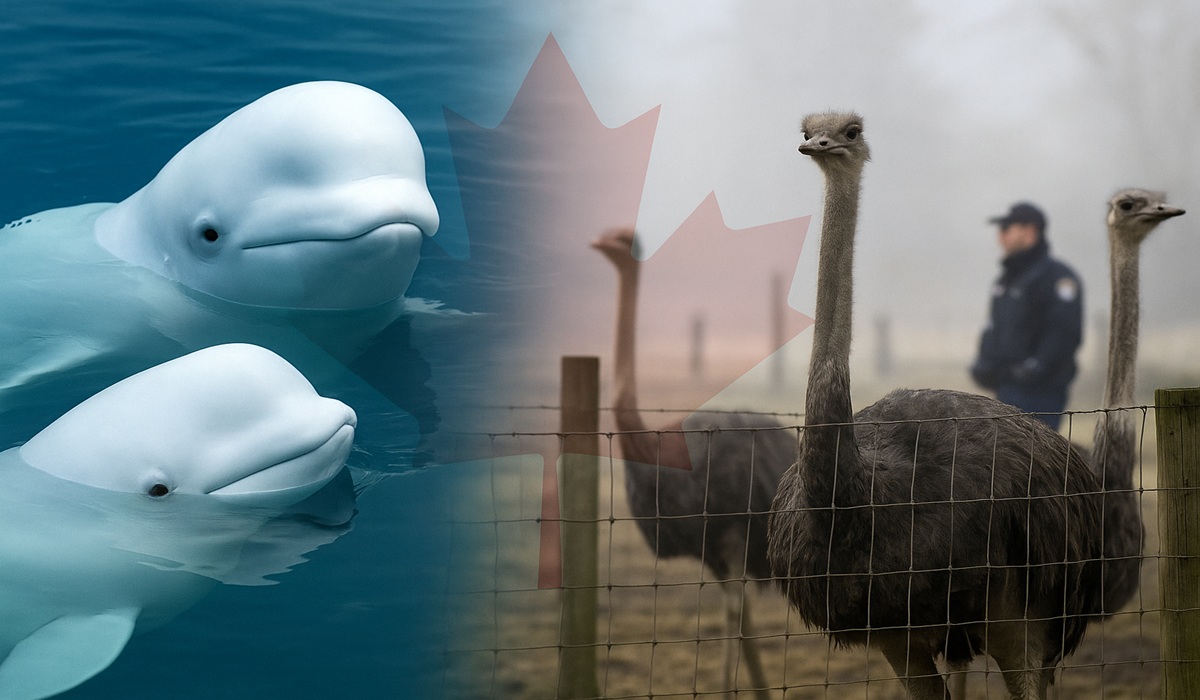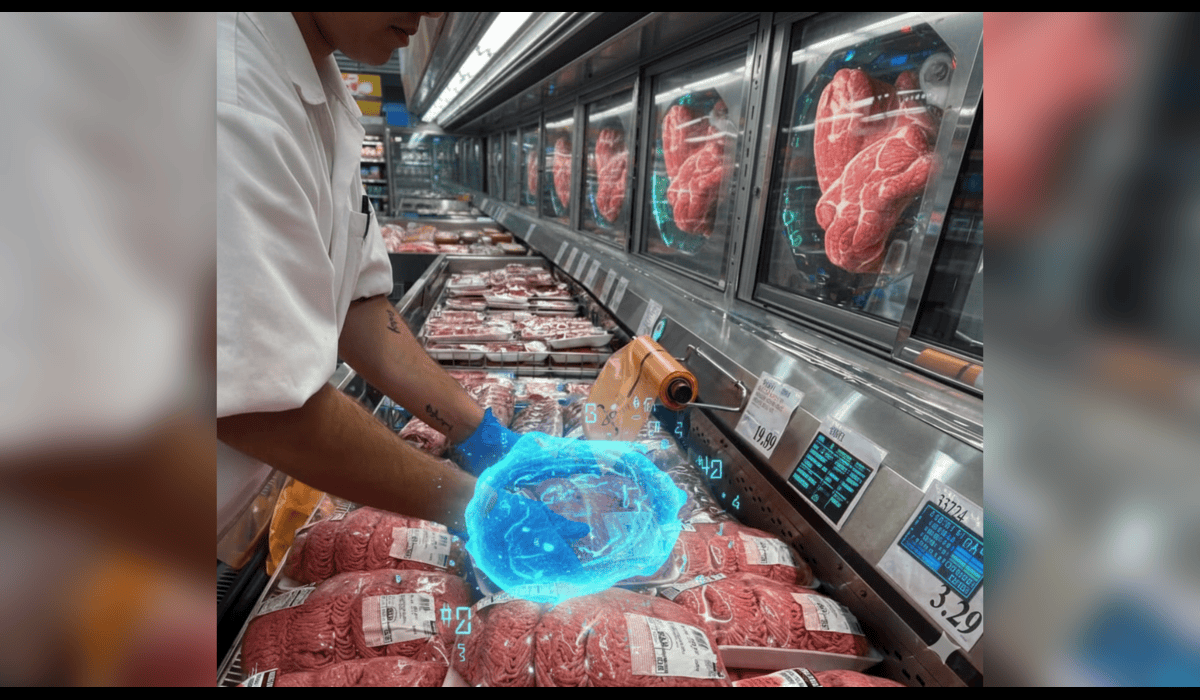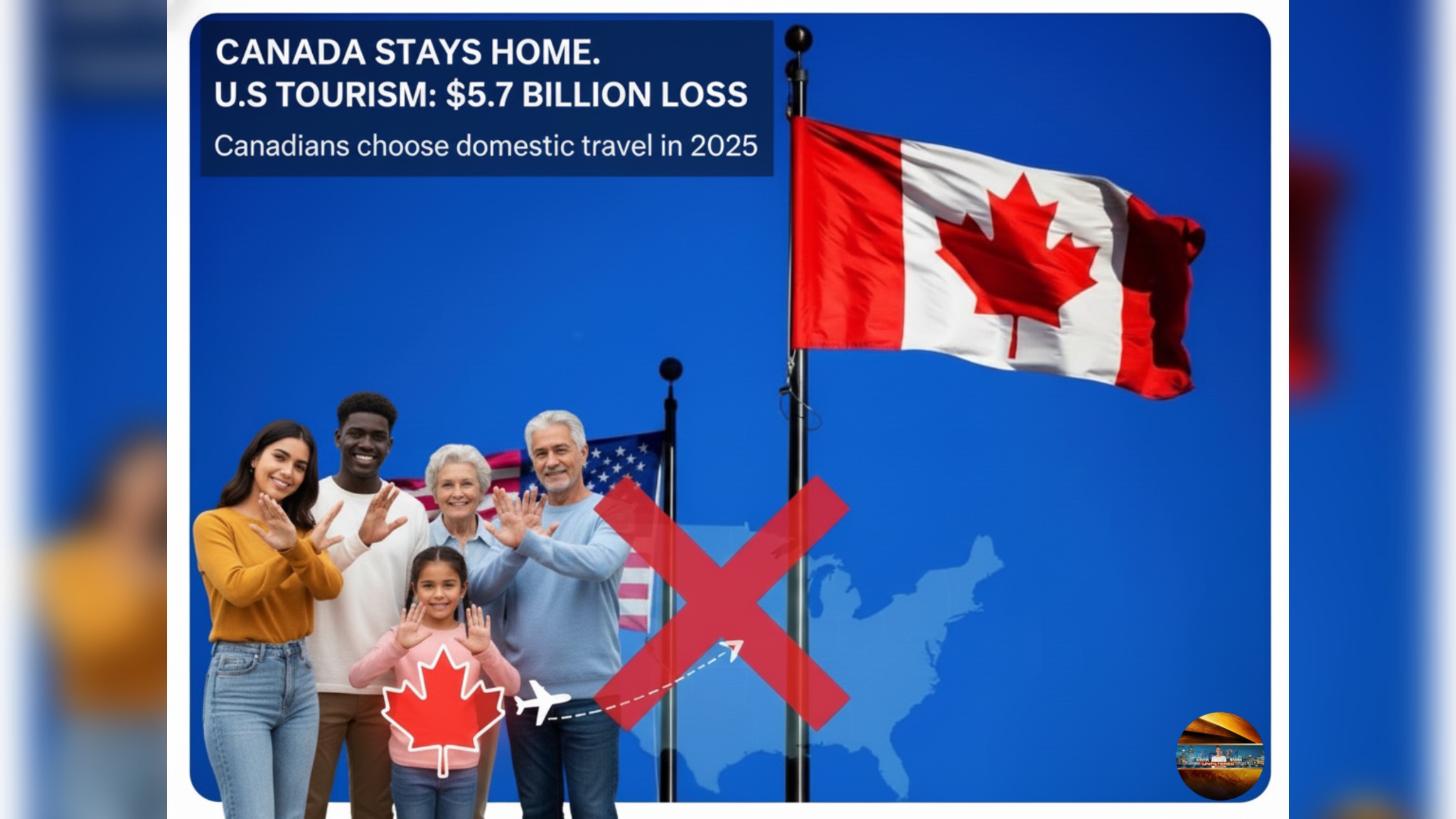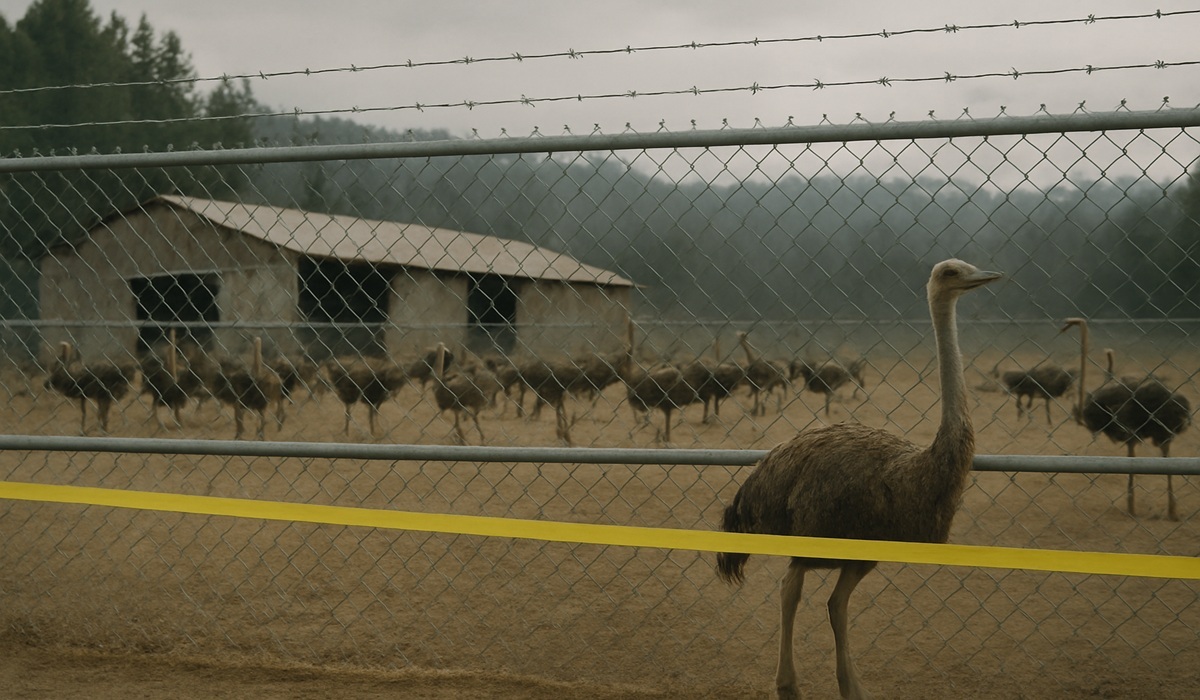By: Donovan Martin Sr, Editor in Chief
Two unfolding stories in Canada — one involving beluga whales in Niagara Falls, Ontario, and the other a flock of ostriches in British Columbia — have placed the country at the centre of a deeply emotional national debate. Both situations are different in nature yet connected by a haunting parallel: animals facing death, not because of cruelty or neglect, but because of the rigid application of federal policy.
At Marineland in Niagara Falls, the park’s owners have warned that they may have no choice but to euthanize thirty beluga whales after Ottawa denied their request to export them to China. The whales, long a feature of the now-shuttered marine attraction, have become symbols of Canada’s evolving relationship with animal captivity. Since the 2019 Ending the Captivity of Whales and Dolphins Act, Marineland has been forbidden from breeding, capturing, or displaying new marine mammals. The law, widely celebrated at the time, was intended to end the commercial entertainment of cetaceans. But years later, it has left Marineland with more animals than it can afford to care for — and no clear path for relocation.
When the park sought a permit to transfer its belugas to Chimelong Ocean Kingdom, one of the world’s largest aquariums, the federal government rejected the request, citing the moral contradiction of sending animals from a country that has banned such displays to a country where they would continue. For Ottawa, it was a matter of principle. For Marineland, it was a death sentence. Without export approval or financial help, the park says its resources are running dry, and euthanasia could become unavoidable.
Across the country in British Columbia, another standoff over life and policy has captured national attention. Earlier this winter, an ostrich farm in the Fraser Valley became the focus of federal intervention after two of its birds tested positive for avian influenza. Under Canadian Food Inspection Agency (CFIA) rules, a single confirmed infection in a flock triggers mandatory culling of all birds on the property. The order, meant to stop the virus’s spread, resulted in the deaths of 69 ostriches by mid-January. Police were called in to secure the property as protesters gathered outside, pleading for the birds to be retested or spared. Some activists accused the government of overreach, while others demanded an overhaul of Canada’s avian flu policy, arguing it’s outdated in an era of advanced testing and quarantine capability.
The similarities between the two cases are impossible to ignore. Both involve animals that, by all accounts, could continue living if not for the unbending structure of law. Both pit compassion against compliance — and both leave Canadians wrestling with whether doing what is “right on paper” can still feel wrong in practice.
Supporters of the federal approach say the government is acting within reason. In the Marineland case, approving an export to an overseas aquarium would undermine Canada’s ban on captive whale entertainment, setting a precedent that weakens animal welfare reforms. In British Columbia, they argue that once avian influenza is detected, speed is everything. Delays or exceptions, even for well-meaning rescues, could risk the spread of a virus capable of devastating farms across the country. From that standpoint, the policies are about prevention, not punishment.
Yet critics on both fronts see these decisions as examples of how inflexible systems can lose sight of humanity. In Niagara Falls, they question whether principle is worth more than life itself — asking what moral ground is gained if thirty healthy belugas are euthanized in Canada rather than sent to a facility abroad. In British Columbia, they say the government’s disease protocols are too blunt for modern science, condemning entire flocks when selective quarantine could suffice. Several animal sanctuaries in the United States even offered to adopt the surviving ostriches and cover all quarantine costs, but those offers were rejected under federal containment rules.
These stories have placed both politicians and the public in an uncomfortable position. Few want to appear callous toward animal welfare, yet few are willing to challenge the authority of federal science and safety protocols. The result is a moral gridlock — compassion on one side, policy on the other — with animals caught in between.
What binds the belugas and the ostriches together is not just their potential deaths but the way their fates expose the limits of well-intentioned law. Both are consequences of systems built to protect, now struggling to adapt to the complexities of real-world ethics. Each case forces Canada to ask whether a law’s integrity should outweigh the lives it governs, and whether empathy has a place in the machinery of regulation.
Perhaps the answer lies somewhere in the middle. The government’s duty to maintain public safety and uphold animal welfare laws is legitimate and necessary. But laws, like the society they serve, must evolve. The existence of emergency relief funds, rapid response ethics panels, or flexible case reviews could prevent future crises like these — ensuring that compassion is not sidelined by process.
In the end, neither the belugas in Ontario nor the ostriches in British Columbia are villains or victims of neglect. They are victims of systems that value uniformity over nuance. And for a country that prides itself on both compassion and good governance, the challenge now is to ensure that neither is sacrificed for the other.
Canada’s true moral test may not be in how firmly it enforces its laws, but in how gracefully it adapts them when life itself hangs in the balance.









